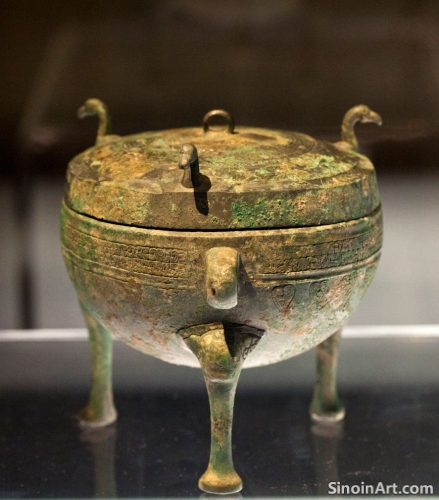The Use of Bronze in Ancient Chinese Warfare: Fortification and Siege Technology
|
Beyond weapons and armor, bronze was also used in the construction and maintenance of ancient Chinese fortifications, and also in the creation of siege engines, underscoring the material's importance in military technology and strategy. The presence of bronze in both siege and fortification techniques highlights its importance in the history of Chinese military innovation.  Bronze was used to create components for siege engines, such as rams, catapults, and siege towers, all of which were designed to breach fortifications. The careful use of bronze to reinforce these machines helped to make them more powerful and more effective. The use of bronze in siege engines made them much more formidable and reliable.  Bronze was also used in the construction of fortifications, such as city gates, watchtowers, and other defensive structures, enhancing their strength and durability. The use of bronze helped to make these fortifications more secure. The combination of fortifications and bronze weaponry helped to make ancient Chinese armies powerful and successful.  The ability to create strong, lasting, and precise mechanisms from bronze helped to improve both the defensive and offensive aspects of ancient warfare. These innovations helped to change the overall nature of ancient warfare. The study of bronze in the context of ancient Chinese warfare helps to show the connection between technology, engineering, and military strategy, revealing how advancements in material science influenced the course of military history. The connection between these different areas helped to shape the culture of warfare in ancient China. The innovations of this era helped to create new and highly effective military strategies. |
Tag : bronze fortifications, ancient siege technology, Chinese warfare, military engineering, bronze weapons
Related information
- Bronze Ware and the Development of Ancient Chinese Trade Practices: Routes, Markets, and Exchange
- Bronze Ware and Ancient Chinese Trade: Examining the Role of Material Culture in Economic Exchange
- The Use of Bronze in Ancient Chinese Medicine: Exploring the Relationship Between Materials and Healing
- The Influence of Bronze Ware on Later Chinese Decorative Arts
- The Use of Bronze in Ancient Chinese Textile Production: Tools and Decorative Elements
This article explores the role of bronze ware in the development of ancient Chinese trade practices, highlighting the emergence of trade routes, markets, and systems of exchange, and revealing its economic, social, and cultural impact.
This article explores the role of bronze ware in ancient Chinese trade, highlighting its use as a valuable commodity, its impact on shaping trade routes and market systems, and its contribution to the broader economic landscape of the time.
This article explores the use of bronze in ancient Chinese medicine, highlighting the belief that the material itself possessed healing properties, and how it was used in creating vessels for preparing remedies, and in some therapeutic practices.
This article explores the influence of bronze ware on later Chinese decorative arts, highlighting its impact on forms, motifs, and aesthetic principles, and demonstrating the enduring legacy of bronze design across various art media.
This article explores the use of bronze in ancient Chinese textile production, highlighting its role in creating tools like hooks and needles, decorative elements like buckles, and revealing the interplay of metalworking and textile craftsmanship.